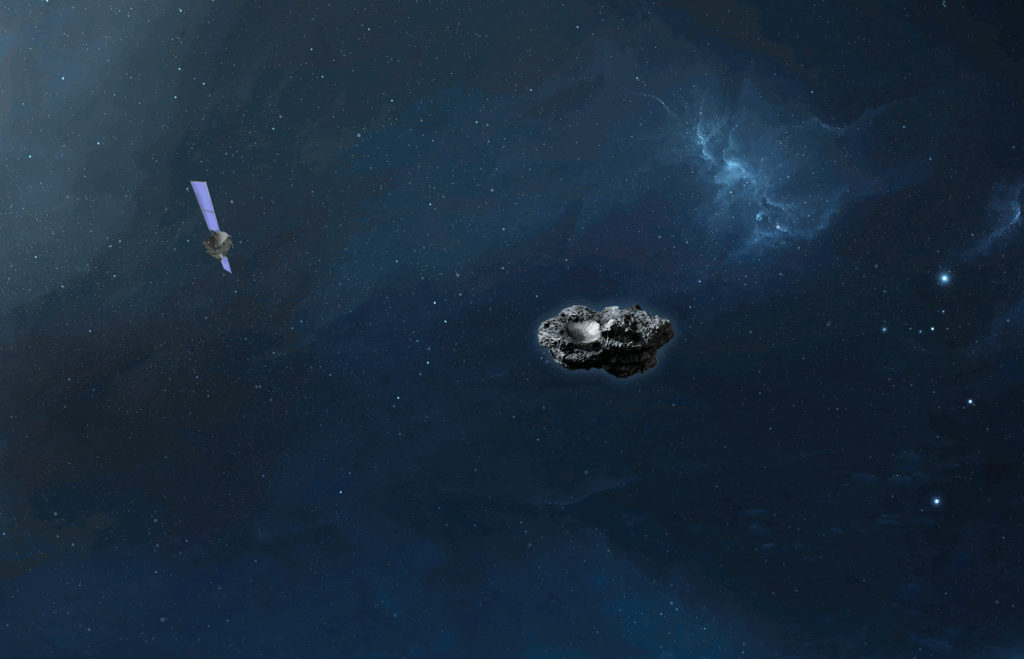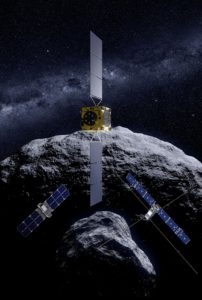NEO-MAPP project concentrates on two topics:![]()
a) Maturation or adaptation to specific use cases of existing modelling capabilities regarding the different processes undergone by asteroids (impacts, dynamics, structural evolution).
b) Development of instruments, technologies and related data exploitation models to support NEO missions.
The reference mission of the project is the Hera mission, which is currently in development at the European Space Agency in its Space Safety program. Hera will be launched in October 2024 to measure the outcome of the impact of the NASA DART mission on the moon, called Dimorphos, of the binary asteroid Didymos. Hera will fully characterize the physical and compositional properties of the binary asteroid, including for the first time, the internal properties. NEO-MAPP activities support the development of Hera, both in terms of modelling and in terms of hardware development and tools for the analysis of data obtained by the mission.

Credit: ESA
The main objective of NEO-MAPP is thus to offer significant advances both in terms of the understanding of the response of asteroids to external forces (in particular a kinetic impact or tidal forces during planetary approaches) and in terms of measurements by a spacecraft (including those necessary to characterize the physical and dynamical properties of the asteroid).
Multiple communities are now interested in NEOs for very different reasons ranging from science to planetary defence and commercial objectives (e.g., mining, resource extraction & exploitation). Given the shared scientific and technological basis, all of these communities require knowledge and modelling capabilities of asteroid properties, as well as the capability to perform close proximity operations and make relevant measurements. The multi-disciplinary approach at the heart of NEO-MAPP is perfectly suited for providing the significant improvements required in each of these aspects.

Credit: ESA
The most threatening NEOs – in terms of collision frequency with the Earth – are the smaller ones, i.e. below 1 km in size. Yet, they are also the population least known to us, as ground observations cannot provide adequate information at these sizes.
Building on the expertise of NEO-MAPP participants, who have been and are currently involved in small-body space missions as well as previous EC-funded NEO-related projects, the NEO-MAPP consortium is ideally set to further advance NEO scientific research and payload technologies directly for the Hera mission and for asteroid exploration and planetary defence in general.
NEO-MAPP will provide significant advances in our understanding of NEOs while at the same time build upon and sustainably increase expertise of European scientists and engineers in both planetary defence efforts and small-body exploration.
